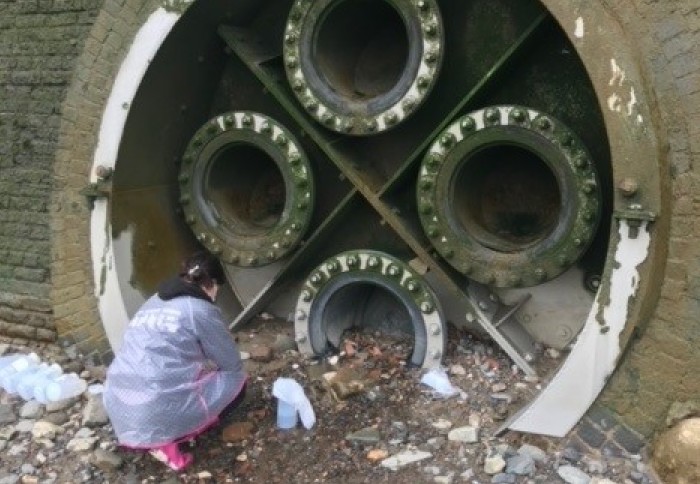Sewage overspill in the Thames likely does not lead to COVID-19 risk, says study

Researchers did not detect any SARS-CoV-2 in Thames water after raw sewage discharge, suggesting it is unlikely to be a route of transmission.
SARS-CoV-2, the virus responsible for COVID-19, has been detected in wastewater and can be used to track outbreaks in populations. This has led researchers to question whether wastewater can also be a source of disease transmission.
While we know that raw untreated sewage can contain SARS-CoV-2 particles, it is not found in the Thames. Dr Emma Ransome
Other viruses, particularly enteroviruses that cause gut infections, are known to pass from untreated sewage to people. Transmission can be direct, through swimming, fishing or boating, or through consumption of infected fish or shellfish.
The Thames receives untreated sewage from 57 Combined Sewer Overflows (CSOs), with many discharging dozens of times per year, particularly during periods of heavy rain in the winter, when COVID-19 prevalence is also high.
To test whether this poses an infection risk, researchers from Imperial College London took samples from six CSOs over the course of eight months, between January and August 2021. Across 218 samples of surface water, river sediment and bivalves (shellfish), the team found no evidence of SARS-CoV-2.
As expected however they did find human enteroviruses from which animals and humans could become infected. The results are published this week in Science of the Total Environment.
Not detected
Lead researcher Dr Emma Ransome, from the Georgina Mace Centre for Living Planet in the Department of Life Sciences at Imperial, said: “While we know that raw untreated sewage can contain SARS-CoV-2 particles, it is not found in the Thames, suggesting it is diluted to below detection limits by storm and surface waters, as well as by the tidal nature of the river.”
Our rivers are far too often polluted by discharges of raw sewage from water companies; although we might not catch COVID, it still can damage our health and the environment. Professor Vincent Savolainen
The team collaborated with researchers at the National Institute of Republic of Serbia, who provided samples from two of the country’s rivers that receive large quantities of raw sewage.
The Imperial team found a few instances of SARS-CoV-2 RNA in samples from the Danube and Sava rivers, suggesting that if the virus were present at detectable levels at the sites tested in the Thames, it would have been found.
However, it is still possible SARS-CoV-2 is present in the Thames, just at lower levels than can be detected. Scientists don’t yet know the minimum number of virus particles needed to cause COVID-19 infection.
Other risks
The Imperial team also took Thames samples to the lab, where they added SARS-CoV-2 particles to see how long they would remain infectious in water and sediments. Their study showed that while virus RNA is detectable for at least a week, infectious virus declines rapidly over three days.
While SARS-CoV-2 may not be a risk of sewage discharge, the team say there are other known risks to frequent discharges. Co-author Professor Vincent Savolainen, from the Georgina Mace Centre for Living Planet at Imperial, said: "Our rivers are far too often polluted by discharges of raw sewage from water companies; although we might not catch COVID, it still can damage our health and the environment."
Currently, environmental monitoring most frequently focuses on surface water sampling in aquatic systems. This work shows that SARS-CoV-2 is detectable in sediments but not found in corresponding water samples. There is some evidence that pathogens may accumulate in sediments, which can be subject to resuspension. The team say more research is needed to examine this for viruses when monitoring water quality.
-
‘Evaluating the transmission risk of SARS-CoV-2 from sewage pollution’ by Ransome E, Hobbs F, Jones S, Coleman CM, Harris N D, Woodward G, Bell T, Trew J, Kolarevic S, Kracun-Kolarevic M, and Savolainen V is published in Science of the Total Environment.
Article supporters
Article text (excluding photos or graphics) © Imperial College London.
Photos and graphics subject to third party copyright used with permission or © Imperial College London.
Reporter
Hayley Dunning
Communications Division